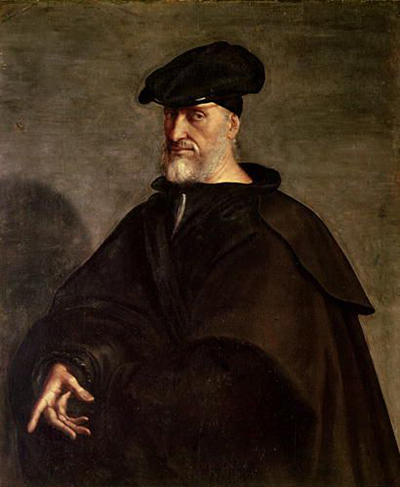 Buy Art Prints Now
Buy Art Prints Nowfrom Amazon
* As an Amazon Associate, and partner with Google Adsense and Ezoic, I earn from qualifying purchases.
This painting by Sebastiano del Piombo is loosely dated at 1526 and depicts a highly significant Genoan naval commander by the name of Andrea Doria.
At this point in his career this Venetian artist was very settled in Rome but continued to produce paintings for donors who lived elsewhere. The papal states were a a hive of commerce and cultural exchange during this period and successful individuals, whatever their industry, would have to look beyond their state's boundaries in order to maximise their wealth and raise their reputation.
Andrea Doria (1466-1560) rose from very modest beginnings to become a highly respected figure within his native Genoa. He was fundamental in this state regaining its independance from France after a protracted power struggle. Doria was certainly an inspirational figure who would provide a source of interest to any commissioned artist.
As a result of his success and the adoration with which Genoans, of all backgrounds and statuses, adored him, he would receive the nicknames of Principe (Prince) and Pater Patriae (Father of the Homeland). The navy commander's role is reflected by several items that adorn this canvas, namely an anchor, a beaked prow, a helm, and various other elements of an ancient ship. This painting has been housed in the Palazzo del Principe in Genoa as well as the Doria Pamphilj Gallery of Rome. It is advisable to check first before planning a visit to view the original. It's dimensions are 107cm x 153cm.
Del Piombo can rightly be considered one of the most significant contributors to the High Renassiace within Italy and drew on developments made by artists previous to him. Those looking to delve deeper into the broader Renaissance, skipping past the household names that you will already be aware of, could look through the work of others such as Andrea Mantegna, Tintoretto, Andrea del Verrocchio, Filippo Brunelleschi and Piero della Francesca.




